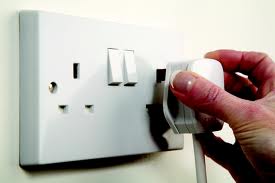ELECTRICAL INSTRUMENTS
Much of the equipment in the operating theatre is powered by electricity.
Most
of the main connections are of Alternating Current (AC) and the frequency is 50
Hz.
Hazards
With AC a person who touches a live conductor
and the earth will complete the circuit.
The current will thus flow through
this person and any one of the two possibilities can occur:
• Electrocution
• Local
burns.
Loose electric connections can also start
sparking, and this can lead to ignition of inflammable material (gases) in the
OT.
Failure
• The
mains voltage in the India is at 220 V, 50 Hz
• Emergency
lighting and power for the operating theatre is provided by an emergency
generator at the standard mains voltage
• Or
from batteries at 12-24 V
• Or a
combination of both
• It is
likely that the generator will supply the emergency electrical needs of the
operating theatre through the existing wiring and socket outlets
• Or some of the electric socket outlets may
be connected to the generator.
The
planning of the design must take into account that the emergency generator output
should be sufficient to supply the demand likely to be required.
• However, it is wise during failure of mains
supply to limit the demand and use lights and equipment that are essential
for the operation in progress.
• With mains failure, there
could be a delay before a generator comes into action.
• Preventive care must be taken with the use
of electro-medical equipment in the vicinity of anesthesia apparatus if flame-able anaesthetic agents are likely to be used (cyclopropane, ether).
• There is potential risk of sparks originating
from switches or motors igniting flammable anesthetic gases which may
leak from anesthesia breathing tubes.
leak from anesthesia breathing tubes.
• This danger exists within a 25 cm
area from the points where leakage occurs.
Any questions be sent to drmmkapur@gmail.com
All older posts are stored in archives for access and review.
Visitors that follow may post contributions to the site.
To create consumer/provider engagement visit www.surgseminar.blogspot.com




